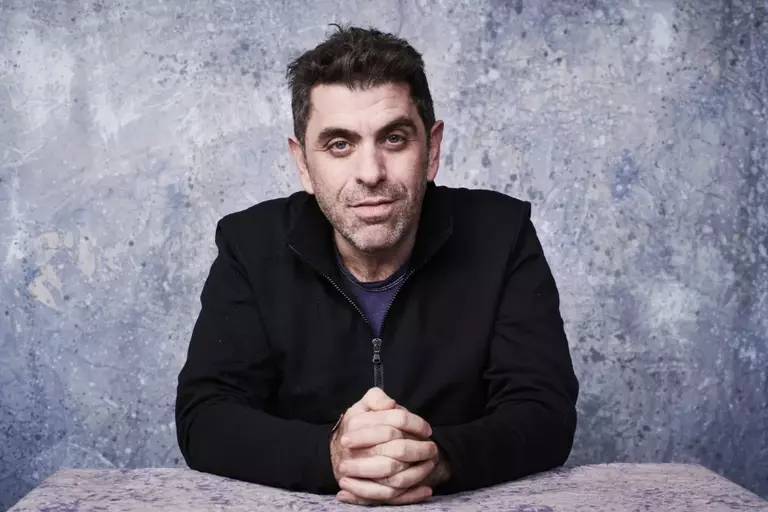You breeze through security, and it’s just a few steps through the empty departure lounge to your gate. Out the window you can see your plane is ready for boarding, and then the tannoy calls out your flight number.
 “If only travel was like this,” laughs Richard Chan as he walks around the new “airport terminal” that opened recently at Aero Mock-Ups studios in North Hollywood.
“If only travel was like this,” laughs Richard Chan as he walks around the new “airport terminal” that opened recently at Aero Mock-Ups studios in North Hollywood.
For 30 years art directors and designers have been calling Chan and his five man “ground crew” to order the first-class compartment of a 747, a Lear Jet cockpit, or the inside of a 787, and by his estimation he has helped send thousands of actors and performers into the air – though none of them ever left the ground.
Fascinated with flying from an early age, he was born under the flight path of the Elstree aerodrome in Hertfordshire, and initially came to Los Angeles in 1978 to qualify for his commercial pilot’s license.
The city was known for its aviation culture, and after initially working in salvage and accident investigation, in 1987 he bought two unwieldy, much-used airplane interiors from Universal Studios and got to work on his idea to make filming easier.
Using a system of 10 – 30 ft long porthole and seat segments, Chan only needs to know what airplane is required for the scene (to determine the layout and what seats are needed), whether the set needs to be functional, and what other areas will be in shot (there’s an especially re-sized toilet for “Mile High” scenes).
Aero-Mockups then assembles a flexible or even bisected airplane cabin fragment for the film crew to then come and shoot. A mini- “Aircraft Set In A Box” can even be shipped to a shoot if they’re on location.
 “We have seats for every class,” says Chan, 60, “and prop items like galley carts and coffee pots have changed little in decades, so often you only need to swap the livery to make it a different airline.”
“We have seats for every class,” says Chan, 60, “and prop items like galley carts and coffee pots have changed little in decades, so often you only need to swap the livery to make it a different airline.”
Touring the rest of the studio is a cross between visiting a museum and rummaging through the toy box of a giant. Through one set of doors you find a cockpit, up a set of stairs are shelves of props, a wall of airport signs makes you wonder which far-flung airport is now full of passengers wandering around lost, and sitting in the first class seats feels like you’re breaking the rules.
Chan tells stories about his flying career, being asked to include stripper poles and bubble baths for rap videos, and the many famous shows he’s worked on (including the Oscar-winner Argo).
Arriving in his office he points to a pair of rather non-descript seats.
“They’re probably the most valuable item I have,” he says. “They’re from Concorde.”
He credits a lifetime within the business for his ability to get airplane interiors and even prototypes, which are used by manufacturers to obtain orders before going into production and can give Aero Mock-Ups something their competitors won’t have for months or even years.
 Plenty of phone calls and the availability to jump on a (real) airplane and travel to auctions, desert “bone yards” or hangars where decommissioned planes from corporations and even film studios can be necessary too, and in rent times the trend for airlines to merge – and go bust – is something Chan has to be aware of.
Plenty of phone calls and the availability to jump on a (real) airplane and travel to auctions, desert “bone yards” or hangars where decommissioned planes from corporations and even film studios can be necessary too, and in rent times the trend for airlines to merge – and go bust – is something Chan has to be aware of.
When he buys, he buys big: everything in the interior, right down to the light bulbs.
“I’m like a vulture picking at the pieces no one wants,” he laughs, before going into a cupboard of prop uniforms and opening the padlock on a glass case filled with badges and name tags. He has multiple copies of each, and many of them are from airlines that no longer exist, like TWA, Pan Am and Braniff.
In the future he’s looking to buy more space for the studio and to house helicopters, space vehicles, vintage aircraft and military jets – if he can find them. One of his original purchases – the cockpit from the 1980 satirical movie Airplane! is still here too.
He brings out a gold badge with a red letter “T” on it.
“This was from Trump’s airline,” he says, “though we can do you Air Force One as well, if you want.”
Feature by James Bartlett






